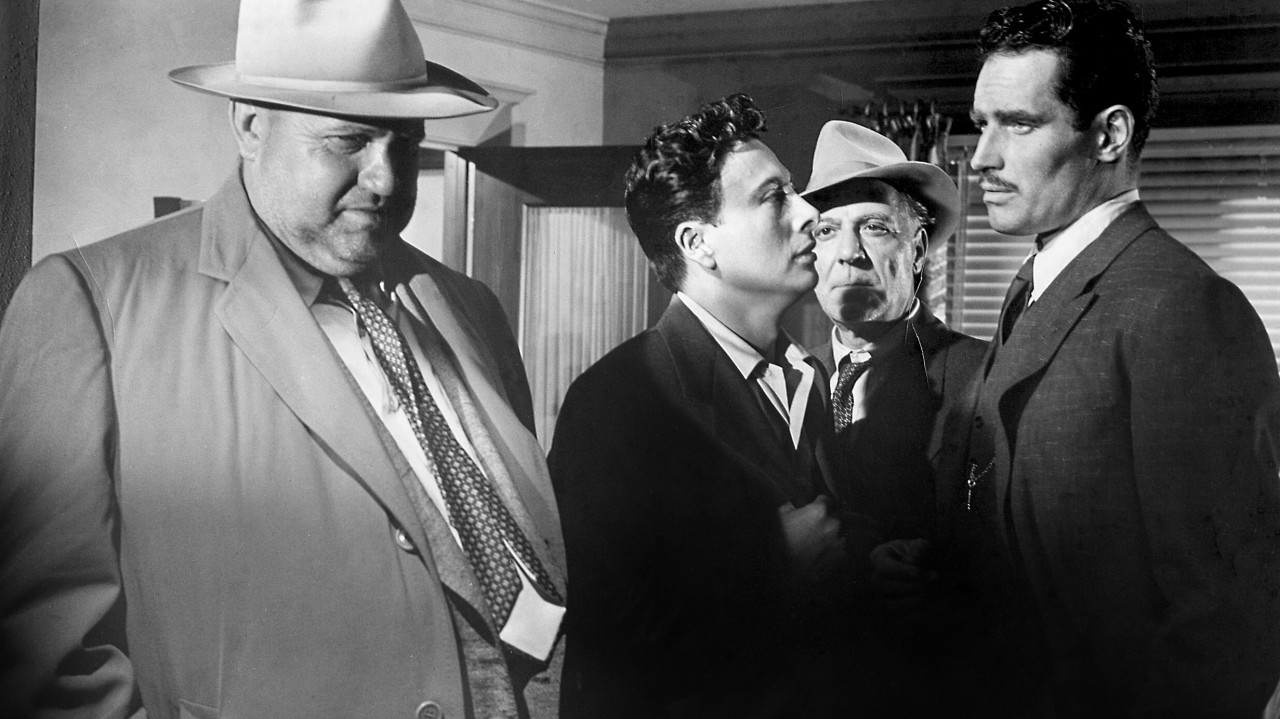
Orson Welles, Part Two
Somewhere within the dense thickets of stimuli in Orson Welles’ Mr. Arkadin, a character invokes a fable in which a scorpion solicits a frog to transport him across a stream, only to then compulsively bite the frog in the back and sink both of them. In a 1963 Film Culture essay, Parker Tyler decoded this story—just one stray allusion in a dizzying array of extratextual and metatextual associations hauled into Welles’ cinematic universe to bolster or in some cases obscure meaning—as a microcosm of the wildly ambitious director’s career, likening the crossing of the stream to the production of a film, the frog to a producer, and the scorpion to the omnipotent filmmaker. Welles’ reputation for muscling his way into creative autonomy on projects that resisted so many conventional modes of producing and shaping movies made him simultaneously one of the most unruly collaborators in the film world and an accepted titan of the seventh art. Yet at the same time, it’s no mere coincidence that it is Welles himself, embodying in Arkadin one of his many elusive God-like figures, who recites this fable to a circle of listeners. Ever the self-effacing mortal beneath his showman braggadocio, Welles was always quick to acknowledge to audiences the casualties of his own undying artistic integrity.
Critical successes and box-office failures, peerless technical innovation alongside cynical studio slicing-and-dicing, a man both idolized and exiled—the established narrative of American cinema’s most infamous lone wolf is one of mounting contradictions. For every fawning account of Welles the Master Craftsman, there is a horror story of compromise and breakdown somewhere out there as counterpoint. Citizen Kane is the greatest film ever made, but follow-up The Magnificent Ambersons suffers irretrievably from behind-the-scenes troubles. The Lady from Shanghai is a fascinating film made on assignment, while The Stranger is an uneven tangle made on assignment. Touch of Evil was the last exhale of greatness before a long sigh of unfinished and often incoherent late-career B-sides. Channeling Shakespeare since boyhood, his handful of adaptations at this late stage ranged from the unforgettable tempest of Chimes of Midnight to a forgettable, incomplete small-screen version of The Merchant of Venice.
Such accepted vulgarizations have fueled the myth of Orson Welles, a distorted history that too often obscures the work itself. Look without these biases and one can see that even as Welles fell out of favor with American audiences—inaugurating a public plummet from multi-talented industry whiz to international enigma with financial woes—and even as he dealt increasingly with limited resources and bureaucratic pressures (some of these hardships, to be sure, self-perpetuated), his work was always developing in surprising ways while remaining astonishingly consistent in others. His unmistakable formal blueprint (a heavy reliance on inky shadow, dense post-synchronized sound design, and immense deep-focus detail that found a quick admirer in Andre Bazin) was established out of the gate with Citizen Kane, but its audacity never wavered, even as it allowed for further exaggerations and new eccentricities. Moreover, the quintessential Wellesian figure—an ideologically misguided, morally broken anti-hero grasping vainly for some lost purity or innocence or truth (a proverbial “Rosebud,” if you will)—stuck around even through his creator’s persistent proficiency in knocking him down through potent ironic detachment or fatalistic plots that continually left him lonely, paranoid or dead. Call it poetic survival in the face of sure defeat.
Welles, of course, so predictable a face in the majority of these films, was this figure. He is the wronged, vengeful Othello, silhouetted against a black void of indifference and driven to extreme actions. He is the Nazi leader in The Stranger, hiding out in a foreign land attempting to shake loose an incriminating past. And he’s there, not fooling anyone, in the openly inward-looking F for Fake, raising parallels between himself and skillful real-world con artists. His autobiography, then, is at once relentless and deeply abstracted—a seemingly incongruous match, but a fitting one given the man’s inconsistencies. If chiaroscuro is generally considered a pictorial expression of human duality, Welles must be considered one of the cinema’s most assertive believers in this metaphor. Taken together, his body of work suggests a fearless look at the self as a site of great potential and unfathomable weakness. For this it’s perhaps telling to recall the words of the scorpion to the frog as they sunk perilously into the stream: “There's no logic to it. It's my character.” – Carson Lund
The HFA retrospective includes all of Orson Welles’ completed, directed films as well as a few other works significant to his legend. The first half of the series screened earlier this year.










